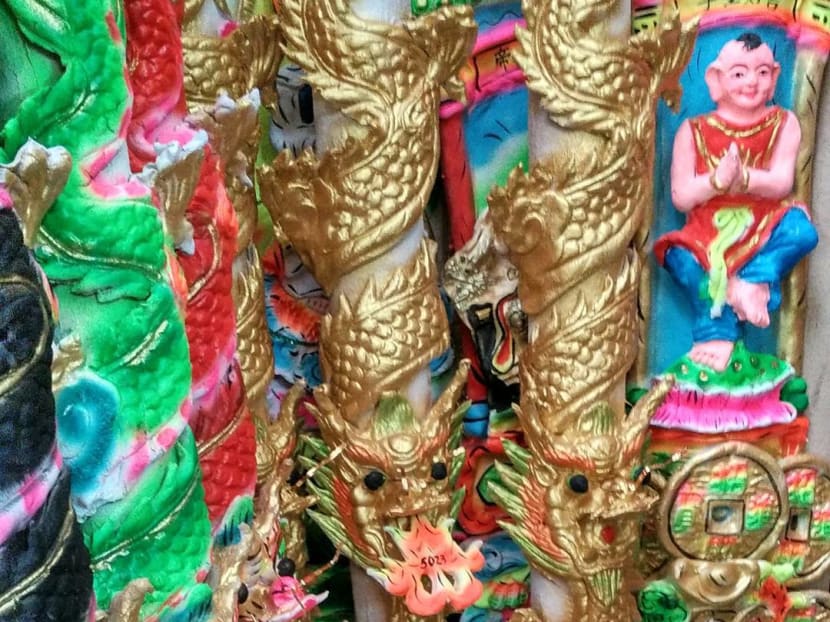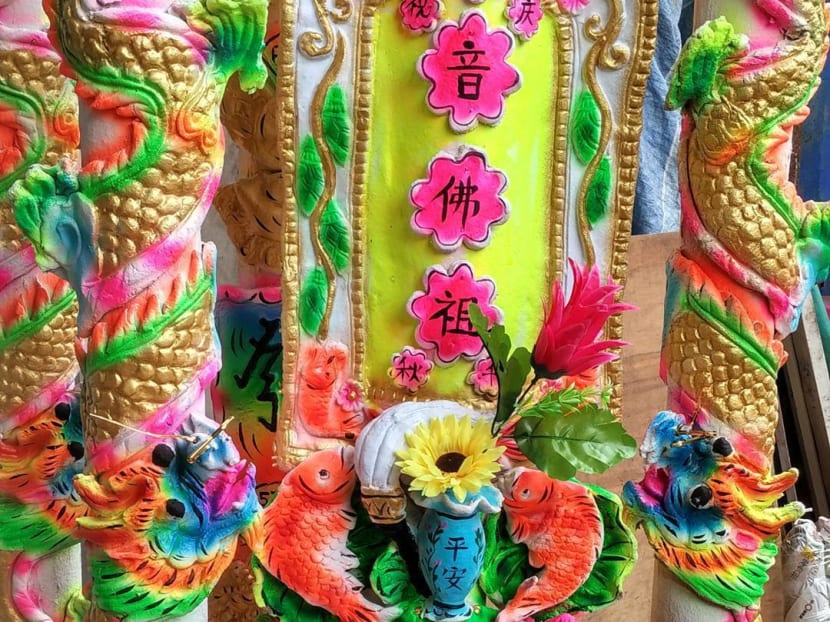Sticking to his trade
Sonia Yeo


Sonia Yeo
soniayeosj [at] mediacorp.com.sg
SINGAPORE – More than one hundred incense (joss) sticks can be produced every minute using machines. The ease of use and efficiency have seen joss stick businesses gravitating towards new technology like these machines. But there are still some who soldier on and continue making joss the old fashioned way. One of them is Tay Guan Heng, operated by Tay Ah Huat, which has been in the joss sticks trade for over 30 years.
The art of making traditional joss sticks has been passed down through generations in his family. “It is a century old trade which started from my great grandfather,” The 57-year-old told TODAY. Tay has dabbled in joss stick making when he was as young as 10-year-old. “During our younger days, we used to play with the joss dough during our school vacation.” It was also around that time that he picked up the skill from his father. Tay sells his joss sticks in a set of three from S$80-S$180 per set.
Unlike the normal plain joss sticks, Tay’s joss sticks come in different designs – ones that are brightly colored and carved into designs like dragons, deities, temple motifs and scenery. His joss sticks can be customised to suit the customer’s needs which Tay claims that “We are the only ones who can provide this (customised service).”
Made with natural materials of wild cinnamon tree work, they are grounded into powder. The grounded powder is then added with water which forms a clay-like material – joss dough. These joss dough can be then crafted into various designs. Carved designs are then air dried or placed under the sun.
A traditional joss stick without designs or carvings would usually take up to four weeks. The process of making a joss stick starts with adding layer after layer of joss dough and leaving it to dry. “Each layer takes about two weeks to dry,” Tay surmised. “It is only after the first layer has completely dried then you can add the second one and wait another two weeks.”
After the joss sticks have been made, carvings will be added onto them. “Each design takes about half an hour for a simple design to about 10 hours for the more intricate designs,” Tay explained. “A simple design would be a dragon on a single stick and intricate ones can be of five dragons or eight deities on one single stick,” Tay shared.
As orders from customers may differ, the main challenge Tay faces is usually what design would fit. “When something is new to us, it will takes hours for us to think and design.” A vanishing trade itself, Tay’s business has seen its up and downs. “Business has been as usual, sometimes up, sometimes down.” However, being in the industry for about three decades, Tay has gathered loyal customers and “new ones referred by regulars,” adding that word of mouth plays a part in getting customers too.
Why hasn’t he changed to machines then? As a veteran in the traditional joss sticks industry, Tay recognises the pros of having one but due to unpredictable demand most of the time- could be good one day and not as good another day, he is not willing to invest in one yet. “It’s also a lot of money,” he added.
Asked about such traditional trades dying out in Singapore, he said: “As Singapore has been developing very fast for the past 30 years or so, there are many traditional trades that have been lost or replaced by other means,” noting that the trades mentioned in a book ‘Can Survive Lah’ written by Margaret William have already vanished. “It is assumed that these trades do not play a bigger part in the development of the country – economy. But these trades show the country’s origin culture, life and history,” he added.
Currently, Tay has no one in mind he can pass this art form to. “We have sons, daughters, nephews and nieces with a higher education level, better careers and better futures. They are also not interested.” He accepts this as par for the course. “we will make joss sticks as long as possible, provided our health permits. This trade will survive as long as there is demand,” Tay said.





